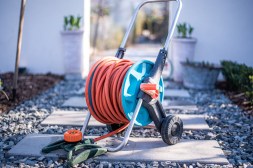The Best Types of Nets for Effective Catch and Release: What You Need to Know
Catch and release fishing is a responsible practice that helps preserve fish populations while allowing anglers to enjoy the sport. However, the type of net you use can significantly impact the survival of the fish after being caught. Choosing the right net for catch and release is essential to ensure minimal harm to your catch. In this article, we will explore the best types of nets for effective catch and release, helping you make an informed choice for your next fishing trip.
Why Choosing the Right Net Matters
When it comes to catch and release fishing, using a suitable net can make all the difference. Traditional nets with coarse mesh or those made from certain materials can damage a fish’s slime coat, which serves as protection against disease. A proper net minimizes stress on fish during handling and increases their chances of survival once released back into their habitat.
Types of Nets Suitable for Catch and Release
There are several types of nets that are ideal for catch and release practices: 1. **Rubber Landing Nets**: These nets have soft rubber mesh that reduces friction when a fish is caught, minimizing injury to delicate fins and scales. They also dry quickly, preventing bacteria growth. 2. **Knotless Nylon Nets**: These nets feature smooth surfaces without knots that might snag on a fish’s skin or gills, making them gentle on aquatic life during retrieval.
Size Matters: Choosing The Right Net Dimensions
The size of your net should correspond with both your target species and fishing style. A larger hoop allows for easier handling while landing bigger fish without causing excessive stress or injury; however, it may also add unnecessary weight if you’re after smaller species. Ensure your chosen net has an appropriate depth as well; deeper nets help keep larger catches submerged longer while reducing flopping.
Additional Features To Consider
Aside from material and size, consider these additional features when selecting your catch-and-release net: 1. **Handle Length**: Longer handles provide better reach when landing fish from shore or on a boat but may be cumbersome in tight spaces like streams or small rivers where shorter handles excel in maneuverability. 2. **Weight**: Lightweight designs make transportation easier without sacrificing strength—look for options that balance durability with portability.
Caring For Your Net To Ensure Longevity
To maximize the lifespan of your chosen net—and protect aquatic wildlife—proper care is crucial. Rinse off any debris after each use to prevent build-up which could harbor harmful bacteria over time; store it in a cool dry place away from direct sunlight where UV rays won’t degrade its materials prematurely.
In summary, choosing the right net for effective catch-and-release practices plays an important role in maintaining healthy fish populations while enjoying angling as a sport. By understanding different types available along with factors such as size & care tips mentioned above—you’ll equip yourself with knowledge needed not just enhance personal success but contribute positively towards conservation efforts too.
This text was generated using a large language model, and select text has been reviewed and moderated for purposes such as readability.


